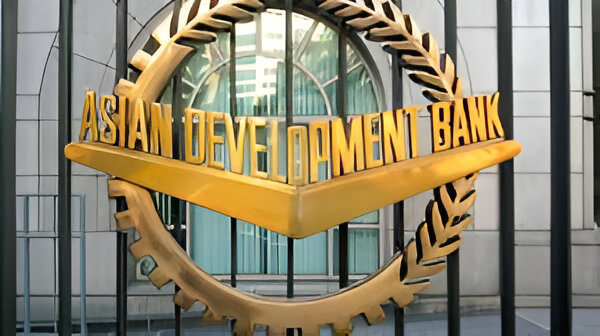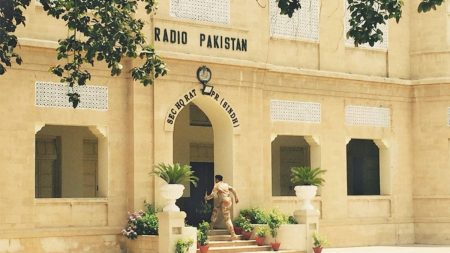Islamabad, Aug 24: Remittances play a crucial role in Pakistan’s economy, as a buffer during crises and a potential driver of sustainable growth. By aligning fiscal policies with macroeconomic indicators, Pakistan can maximize the positive impact of remittances on household welfare and long-term economic development.
In a report released by Asian Development Bank it is stated, “It is hard to overstate the importance of remittances for Pakistan. In a country often challenged by balance-of-payments difficulties, these financial inflows are an essential source of external financing and help reduce current account deficits.”
Due to the country’s extended family system, remittances have also worked as a crucial element of social protection boosting poverty reduction, sustaining household consumption, and strengthening resilience in times of crises. Maintaining a robust flow of remittances and enhancing their positive social and economic effects are key policy objectives in Pakistan.
According to report, remittances have played an important role in Pakistan’s development process since the 1990s, becoming crucial for the country for at least two reasons. The first is their relative size. Following continued growth in the 2000s, remittances now account for nearly 10% of Pakistan’s gross domestic product. This is considerably higher than the average for South Asia as a whole and roughly equal to the value of Pakistan’s net imports of goods and services.
As such, remittances have a significant impact on the country’s balance of payments and are a key source of foreign exchange. The second is their relative stability, particularly during large global shocks and crises. For instance, remittances to Pakistan proved resilient to the impact of the Global Financial Crisis during 2007–2008.
Net remittance inflows even surged during the pandemic. In 2021, at the height of the pandemic, Pakistan received $31.1 billion in remittances from overseas, a 19.8% increase from the previous year. Despite their importance, however, we still do not fully understand the factors that drive these financial flows to the country. In general, economists distinguish between two motives to remit: the altruistic or compensatory motive and the speculative or opportunistic motive.
The altruistic motive suggests migrants send back home more funds to help families and friends in difficult times. This can explain the resilience of remittances during crises in the home countries. The speculative motive, in contrast, suggests that remittances should increase when the migrant-sending economy is doing well for instance, because migrants send home more funds to take advantage of investment opportunities.
While the empirical evidence on their relative importance is still mixed, both motives are likely to play a role. Importantly, both motives are also bound to be affected by macroeconomic conditions in host and sending countries.But which macroeconomic factors matter most for remittances? This is a key question for policymakers in remittance-dependent countries such as Pakistan, as the design of appropriate policy action depends on the answer to it.
The right policies can help turn remittances from a cushion to weather crises and cyclical downturns, to a pillar of faster and more sustainable growth in Pakistan.In a recently published ADB Economics Working Paper, we find that domestic economic activity and interest rates are positively associated with remittances to Pakistan, which is in line with the speculative motive. This suggests that policies leading to better economic performance and macroeconomic stability would also benefit Pakistan by supporting remittance growth.
At the same time, the results show that higher domestic inflation also boosts remittances, likely as migrants send home more funds to compensate households for the loss of purchasing power. This is in line with the current uptick in remittance flows, associated with rising cost of living and energy prices, and their negative socio-economic impact.
We also find that migrants’ motivations play a key role, so that the persistence of remittances is largely independent of the ups and downs of the macroeconomic cycle.Our findings provide two main insights for policymakers in Pakistan. First, the compensatory nature of remittances during crisis episodes such as inflationary spikes or economic crises indicates that these financial flows remain an important shock-absorbing mechanism for households.
Policy can enhance this role played by remittances. One option is to link fiscal incentives for remittances to an appropriate list of macroeconomic indicators, so that the incentives would be triggered by particularly large drops in economic activity or price increases. Second, since the elevated persistence of remittances to Pakistan largely reflects deterministic factors, average remittance flows can be expected to remain significant going forward.
Policy can play an important role in sustaining or even boosting this trend, for instance, by fostering financial development to remove structural hurdles to remittances.Even more importantly, policy measures can incentivize the allocation of remittances toward productive investment in both physical and human capital. This would boost the economy’s productive potential and sustainable growth rate.
Based on our estimates, it would also ultimately reinforce remittance flows via the domestic economic activity channel, potentially giving rise to a virtuous remittance-growth cycle.The right policies can help turn remittances from a cushion on which the economy can rely to weather crises and cyclical downturns to a pillar of faster and more sustainable growth in Pakistan.









